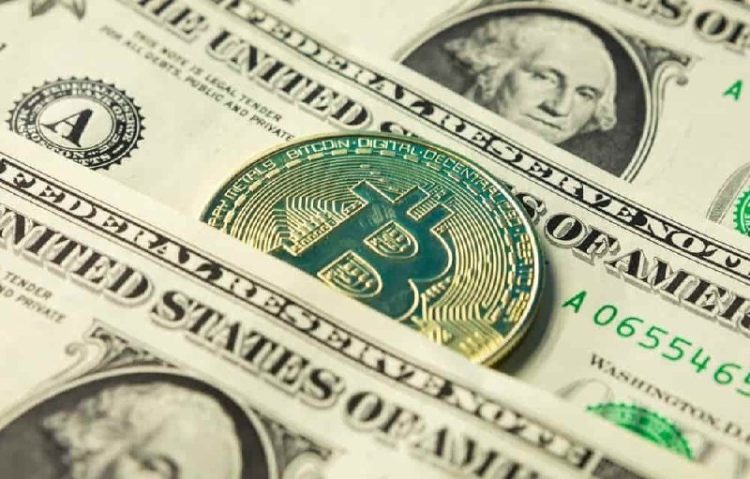For more than a decade, Bitcoin and Ethereum have been viewed through the dual lenses of innovation and speculation. Originally positioned as alternatives to traditional financial systems, these cryptocurrencies are now deeply influenced by the very macroeconomic forces they once claimed to escape. Interest rates, inflation, and central bank policies—especially those of the U.S. Federal Reserve—play an outsized role in shaping market dynamics for these legacy coins.
But are Bitcoin and Ethereum truly the “digital gold” inflation hedge their proponents claim? How do they respond to Federal Reserve announcements and global economic stress? And what can we learn from observing their performance in the context of broader macro trends? Let’s dive deep into the intersection of crypto and global economics.
Bitcoin as an Inflation Hedge: Myth or Reality?
Bitcoin was introduced in 2009 during the aftermath of the Global Financial Crisis, positioned as a decentralized alternative to fiat money. Its fixed supply of 21 million coins fueled the narrative that Bitcoin is an ideal hedge against inflation.
The Case for Bitcoin as an Inflation Hedge
- Scarcity by Design: Unlike fiat currencies, Bitcoin’s supply is capped. This feature makes it theoretically resistant to devaluation caused by central banks printing money.
- Store of Value Narrative: Supporters compare Bitcoin to gold, arguing that it can serve as a digital reserve asset immune to debasement.
- Global Accessibility: Bitcoin transcends borders, making it appealing in countries facing hyperinflation or currency collapse (e.g., Venezuela, Turkey, Argentina).
The Counterarguments
- Short-Term Volatility: Unlike gold, Bitcoin remains highly volatile, with price swings often exceeding 10% in a single day. This undermines its reliability as a hedge for many investors.
- Correlation with Risk Assets: During times of macroeconomic stress, Bitcoin has frequently moved in tandem with equities, suggesting it behaves more like a risk asset than a safe-haven hedge.
- Mixed Evidence During Inflationary Periods: In 2021–2022, when inflation surged to multi-decade highs in the U.S., Bitcoin initially rose but later crashed alongside tech stocks, casting doubt on its inflation-hedge narrative.
Verdict
Bitcoin may serve as a long-term store of value due to its scarcity and decentralized nature, but in the short to medium term, its performance often aligns more closely with speculative assets than with traditional inflation hedges like gold. Ethereum, while valuable, is even more volatile and tied to its utility in DeFi and NFTs, making it less suited for the hedge narrative.
Reaction to Federal Reserve Announcements
The U.S. Federal Reserve’s policies are arguably the most significant macro influence on global financial markets, including cryptocurrencies. Interest rate hikes, balance sheet adjustments, and policy signals all ripple through the crypto space.
Interest Rate Hikes
- 2022 Rate Hike Cycle: As the Fed raised interest rates aggressively to combat inflation, Bitcoin and Ethereum prices plummeted. Investors shifted capital into higher-yielding, low-risk assets like Treasury bonds, reducing appetite for volatile cryptos.
- Liquidity Drain: Higher rates decrease the availability of cheap money, impacting speculative markets like crypto more severely than traditional safe-haven assets.
Policy Announcements and Market Reactions
- Forward Guidance: Even before actual hikes, Fed announcements often trigger volatility in BTC and ETH markets. Traders react quickly to expectations of tightening or easing.
- Correlation with Tech Stocks: Bitcoin and Ethereum frequently mirror Nasdaq movements, reflecting their shared sensitivity to Fed-driven liquidity conditions.
The Role of QE and Stimulus
When the Fed expanded its balance sheet during the COVID-19 crisis, injecting liquidity into markets, cryptocurrencies surged to all-time highs. This suggests that crypto thrives in environments with abundant liquidity and low borrowing costs.
Impact of Global Economic Stress
Global crises—whether financial, political, or humanitarian—often reveal the dual nature of cryptocurrencies: both as risk assets and as alternative financial systems.
Crypto During Financial Stress
- COVID-19 Pandemic (2020): Initially, Bitcoin fell alongside global equities during the liquidity crunch in March 2020. However, as stimulus and QE expanded, BTC surged to record highs by the end of the year.
- Ukraine-Russia War (2022): Crypto saw increased adoption in conflict zones as a tool for remittances and capital flight, while global prices fluctuated due to risk-off sentiment.
Crypto in Emerging Markets
- In countries with currency devaluation, Bitcoin adoption often spikes as people seek protection from inflation.
- Stablecoins, pegged to the U.S. dollar, often outperform Bitcoin and Ethereum during crises, highlighting that while BTC/ETH gain attention, crypto’s practical hedge role often falls to stable assets.
Systemic Stress in Global Finance
Events like the collapse of major banks (e.g., Silicon Valley Bank in 2023) or liquidity crises in bond markets can create paradoxical impacts:
- Some investors flock to Bitcoin as a hedge against systemic failure.
- Others sell Bitcoin for liquidity, reinforcing its risk asset profile.
This duality demonstrates that crypto’s role during crises is context-dependent, shaped by investor psychology as much as by macro fundamentals.
Case Studies: Macro Events and Crypto Performance
To better understand these dynamics, let’s look at some real-world examples.
Inflation Surge of 2021–2022
- Inflation in the U.S. reached over 9% in mid-2022.
- Bitcoin initially climbed above $60,000, as the hedge narrative gained traction.
- As the Fed raised rates aggressively, Bitcoin dropped to below $20,000, aligning with equities.
COVID-19 Stimulus Wave (2020–2021)
- Global stimulus flooded markets with liquidity.
- Bitcoin surged from $5,000 to $60,000 within a year, benefiting from easy money and increased institutional adoption.
Debt Ceiling and U.S. Treasury Stress (2023)
- During debates over the U.S. debt ceiling, uncertainty drove some investors to Bitcoin, boosting its reputation as an alternative to fiat-backed securities.
- However, price action remained tied to risk sentiment, not purely safe-haven flows.

The Broader Macro-Crypto Relationship
Cryptocurrencies, once imagined as detached from traditional finance, are now deeply intertwined with global macroeconomic conditions.
Correlation Shifts
- Short-term: High correlation with risk assets, especially tech stocks.
- Long-term: Potential divergence as Bitcoin matures into a digital reserve asset.
Ethereum’s Unique Position
Ethereum, while impacted by macro trends, has additional dynamics tied to its utility:
- DeFi activity often falls during tightening cycles, reducing ETH demand.
- Upgrades like The Merge have improved Ethereum’s sustainability, but macro pressures still dictate much of its price action.
Future Outlook
As institutional adoption grows, Bitcoin and Ethereum will likely become even more responsive to central bank policies. Paradoxically, this integration into global finance may enhance their legitimacy while undermining the original vision of independence from fiat systems.
Conclusion: Are Bitcoin and Ethereum Truly Macroeconomic Hedges?
The evidence suggests a nuanced answer. Bitcoin and Ethereum are not perfect hedges against inflation or global crises in the short term. Their volatility and correlation with risk assets often undermine the hedge narrative. However, their long-term scarcity, decentralization, and growing institutional acceptance give them unique resilience in a financial world shaped by central bank policies.
In reality, Bitcoin and Ethereum are best understood not as direct replacements for gold or government bonds but as complementary assets within a diversified portfolio. They reflect investor confidence, liquidity cycles, and global economic stress—all while offering an alternative vision of money for the digital age.
As interest rates, inflation, and Fed policies continue to evolve, so too will the role of legacy cryptocurrencies. The question is not whether they are hedges, but how they will coexist and adapt in an economy where traditional finance and decentralized assets are increasingly intertwined.

























